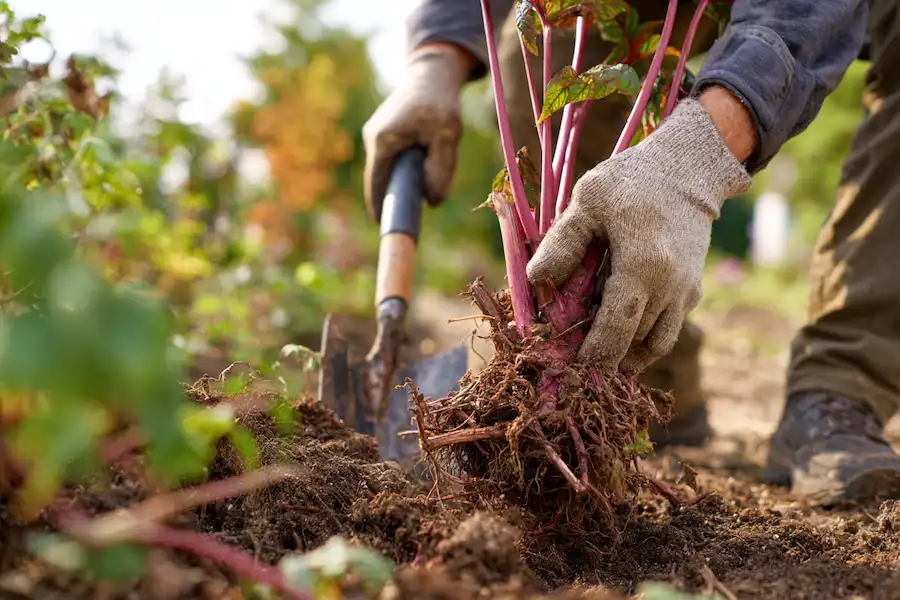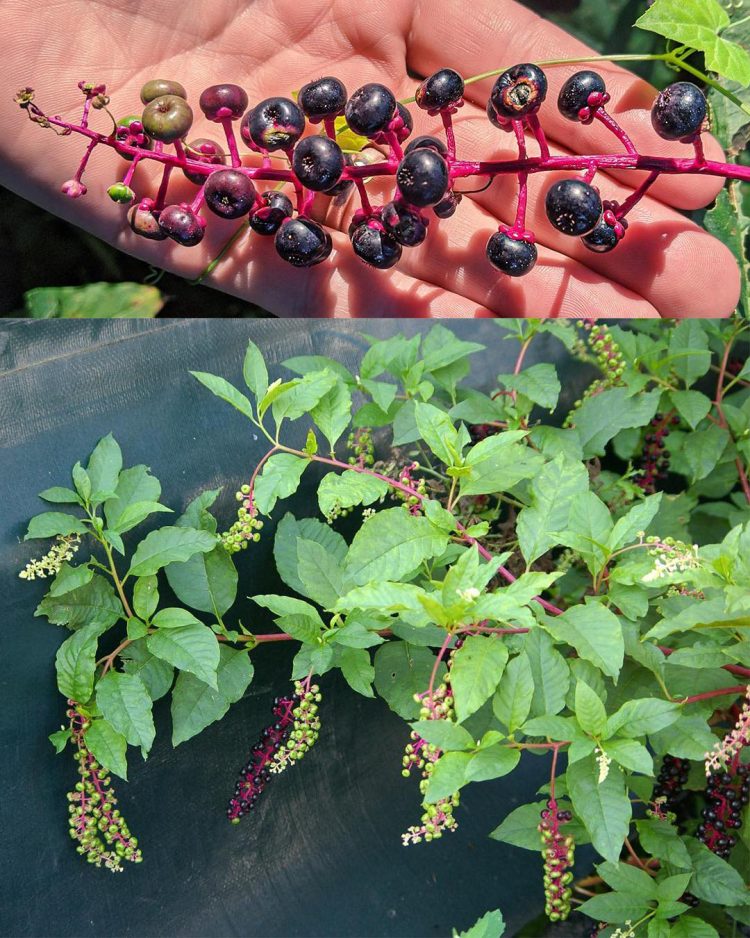Some traditional Southern dishes feature “poke sallet” made from young pokeweed leaves. However, this is extremely risky because:
- Only young leaves (before stems turn red) are used.
- They must be boiled and drained multiple times to remove toxins.
- Even then, trace toxins may remain, and mistakes can lead to poisoning.
Health experts strongly discourage consuming pokeweed because the margin between “edible” and “deadly” is dangerously thin.
Dangers Beyond Eating: Handling Risks
Pokeweed’s sap can cause skin irritation, so always wear gloves when removing it from your property. Avoid burning it—inhaling the smoke can be toxic. Pets and livestock are also at risk if they chew on leaves or roots.
How to Remove Pokeweed Safely
If you find pokeweed in your yard:
- Wear gloves and protective clothing.
- Dig out the entire root system. Pokeweed roots are thick and can regrow if pieces remain.
- Dispose of it properly. Do not compost it, as toxins can persist. Bag it securely and put it in the trash.
Important Safety Tips
- Never eat pokeweed berries—not even one.
- Educate children so they don’t confuse them with grapes or blueberries.
- Keep pets away from areas where pokeweed grows.
- Wash hands thoroughly after handling the plant.

Pokeweed is a plant that demands respect. While it has a history in traditional medicine, the danger it poses far outweighs any potential benefit. For beginners and experienced gardeners alike, the best approach is to admire its beauty from a distance and never bring it to your plate.
Disclaimer: This article is for educational purposes only. Do not consume pokeweed or use it for medicinal purposes without professional guidance, as improper use can cause serious health risks or death.
